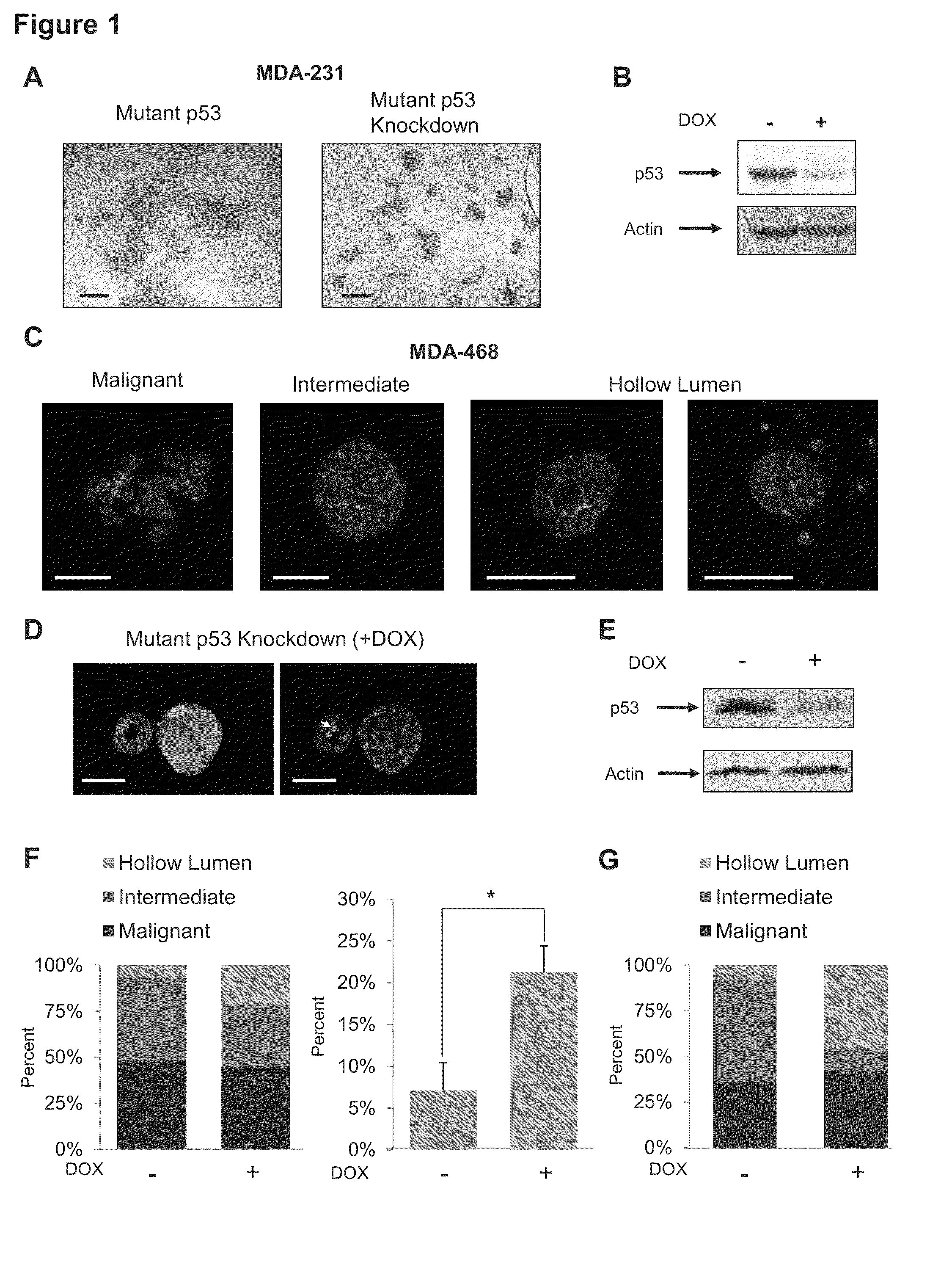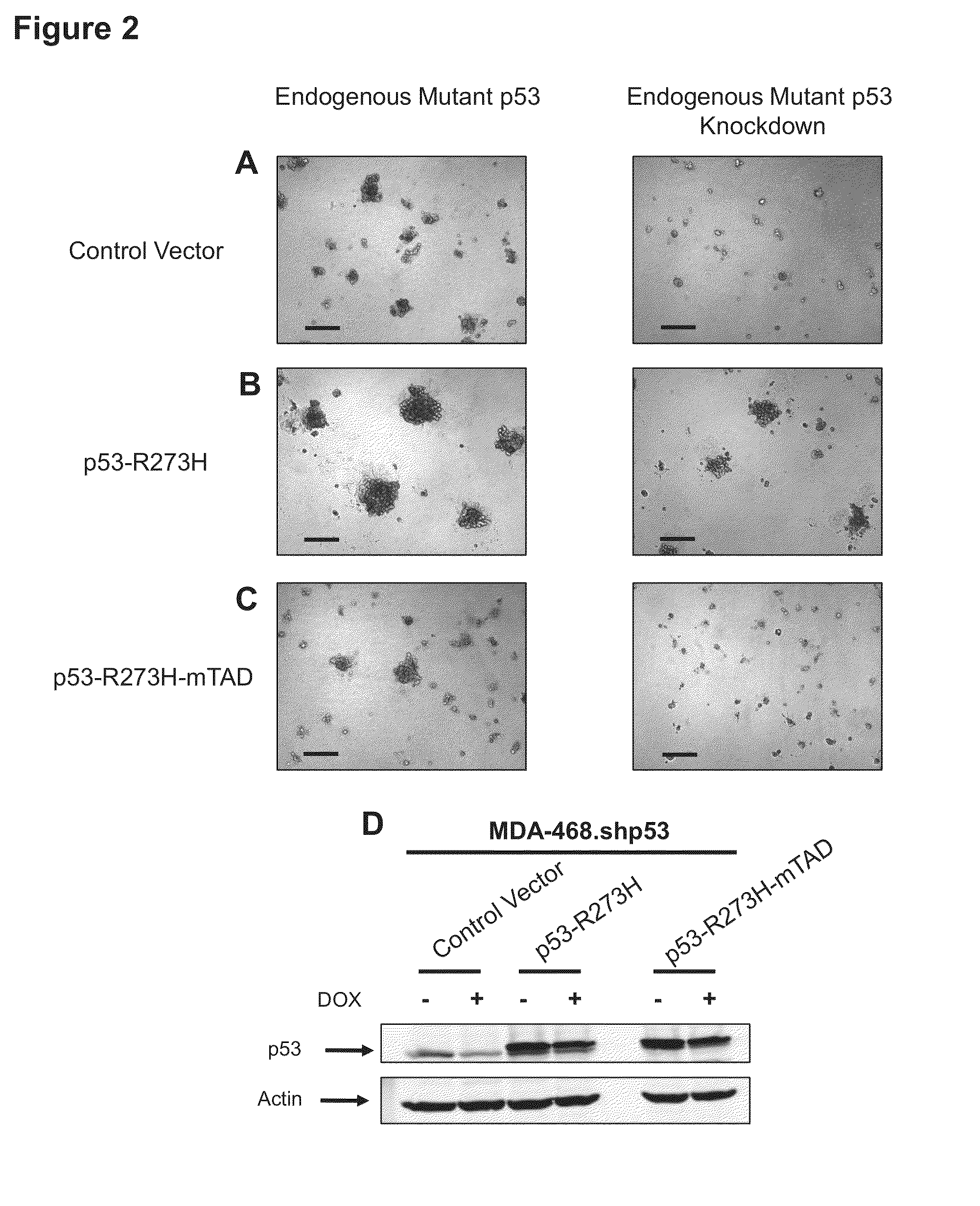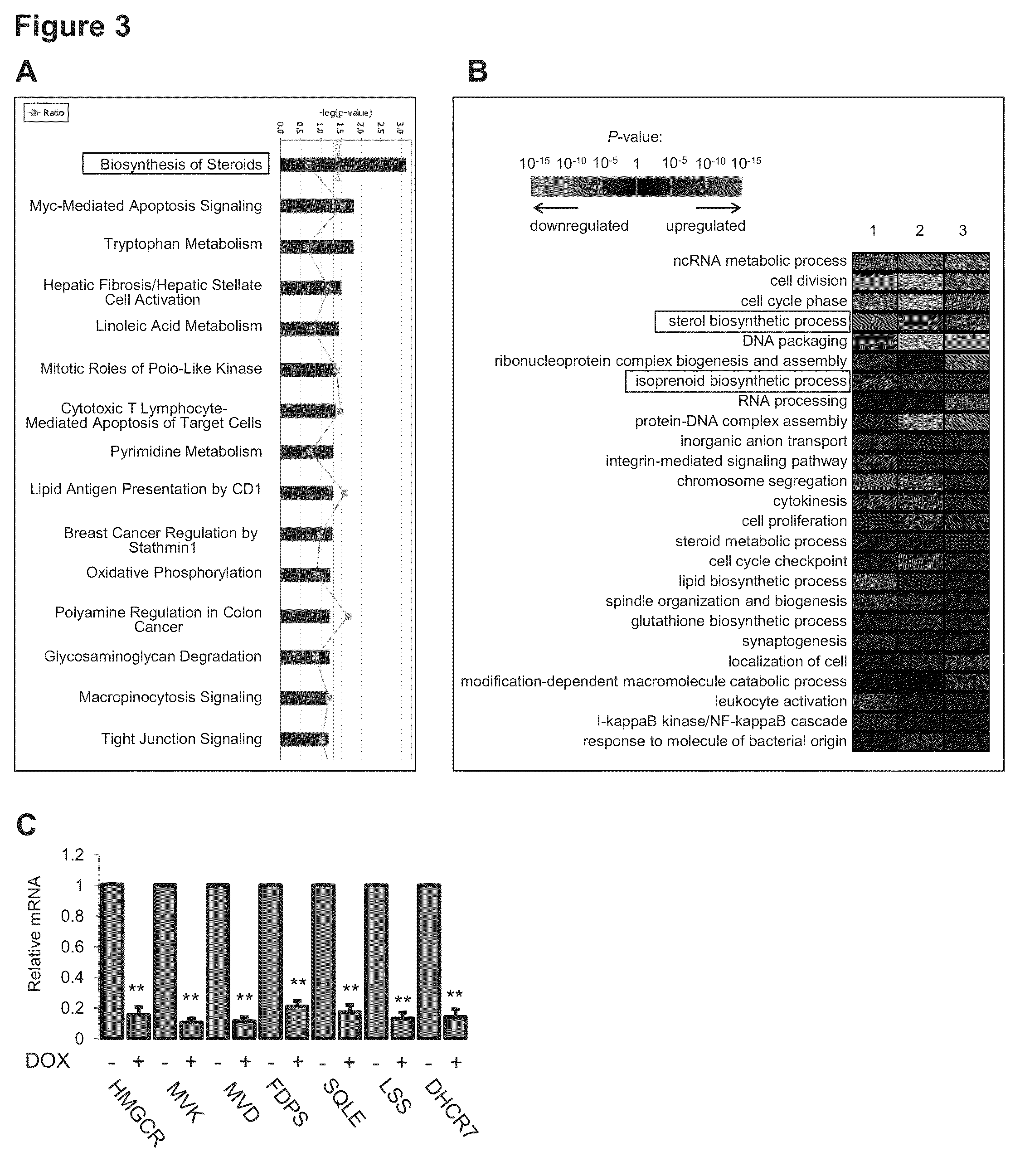Method for Treating Cancer Harboring a p53 Mutation
a p53 mutation and cancer technology, applied in the field of p53 mutation treatment, can solve the problems of unexplored p53 mutation-induced phenotypic alterations in mammary tissue architectur
- Summary
- Abstract
- Description
- Claims
- Application Information
AI Technical Summary
Benefits of technology
Problems solved by technology
Method used
Image
Examples
example 1
Experimental Procedures
[0178]Plasmids, siRNA, Antibodies and Reagents
[0179]pLNCX-Flag-p53-R175H, -G245S, -R248Q, -R248W, -R273H and -L22Q / W23S / W53Q / F54S-R175H, -G245S, -R248Q, -R248W, -R273H were generated from pLNCX-Flag-p53-WT using the Stratagene QuikChange Site-Directed Mutagenesis kit according to the manufacturer's instructions. Mutagenesis primer sequences are provided in Table 2. pcDNA3.1-Myc-mSREBP-1a, -1c and -2 encode the mature forms of the SREBP transcription factors (Datta and Osborne, 2005). All constructs were verified by sequencing. p53 shRNA (2120) in STGM (tet-on) (Brekman et al., 2011) were used to establish cells with stable, inducible p53 knockdown. For transient knockdown experiments, siRNAs targeting SREBP1 (s129) or SREBP2 (s27) were purchased from Invitrogen. All-Stars (Control) and p53 siRNA were purchased from Qiagen.
[0180]p53 was detected using mAb 1801, DO-1 or 240. Anti-Actin (A2066), anti-Flag (F3165) and control IgG (I5381) antibodies were purchased ...
example 2
[0213]Controls were compared to the 3D morphologies of two metastatic breast tumor cell lines that each expresses exclusively a single mutant form of the p53 allele: MDA-231 (R280K) and MDA-468 (R273H). These cells were engineered to stably express a miR30-based doxycycline-inducible shRNA targeting endogenous mutant p53 in the 3′ UTR (designated MDA-231.shp53 and MDA-468.shp53). In both cases mutant p53 reduction by shRNA led to dramatic changes in the behavior of the cells when cultured in a 3D microenvironment. MDA-231 cells, when grown in 3D culture, normally exhibit an extremely disordered and invasive morphology, which has been characterized as “stellate” (Kenny et al., 2007). Depleting these cells of mutant p53 in 3D culture conditions almost completely abrogated the stellate morphology of large, invasive structures with bridging projections (FIG. 1A). Instead, MDA-231 cells with reduced mutant confirm p53 developed smaller, less invasive appearing cell clusters. Depletion of...
example 3
Mutant p53 Upregulates 17 Genes Encoding Enzymes in the Mevalonate Pathway
[0218]Since the transactivation activity of mutant p53 is very likely to be critical for its phenotypic effects in 3D culture, genome-wide expression profiling on MDA-468.shp53 cells grown in 3D culture was performed, with or without mutant p53 knockdown. 989 genes were identified as significantly altered (p<0.01) following shRNA-mediated downregulation of endogenous mutant p53, suggesting that mutant p53 acts promiscuously to affect many cellular processes. To guide our identification of those pathways / processes necessary for mutant p53 function in 3D culture, two analysis methods were employed, Ingenuity Pathway Analysis (IPA) and Gene Ontology (GO) Analysis. Since each of these analysis tools has a unique approach for grouping genes according to the pathway or process in which their protein products are reported to function, both methods were exploited in hopes that the pathways / processes that were identifi...
PUM
| Property | Measurement | Unit |
|---|---|---|
| density | aaaaa | aaaaa |
| temperature | aaaaa | aaaaa |
| lipophilic | aaaaa | aaaaa |
Abstract
Description
Claims
Application Information
 Login to View More
Login to View More - R&D
- Intellectual Property
- Life Sciences
- Materials
- Tech Scout
- Unparalleled Data Quality
- Higher Quality Content
- 60% Fewer Hallucinations
Browse by: Latest US Patents, China's latest patents, Technical Efficacy Thesaurus, Application Domain, Technology Topic, Popular Technical Reports.
© 2025 PatSnap. All rights reserved.Legal|Privacy policy|Modern Slavery Act Transparency Statement|Sitemap|About US| Contact US: help@patsnap.com



